Getting a new computer to replace a dying one is usually a big investment even if you decide to pick out the parts and build it yourself. However, as I wasn’t looking to replace my main PC, I decided to go a different route and pick up a refurbished system instead.
Back in the summer, I used an old monitor and an underpowered mini PC to build a digital dashboard for my office. Unlike the Echo Show 15 that now hangs in my kitchen, it’s highly customizable with all the important information I need each day — like my calendar and the latest stories from Tom’s Guide — available at a glance despite the fact that it’s running on four-year-old hardware.
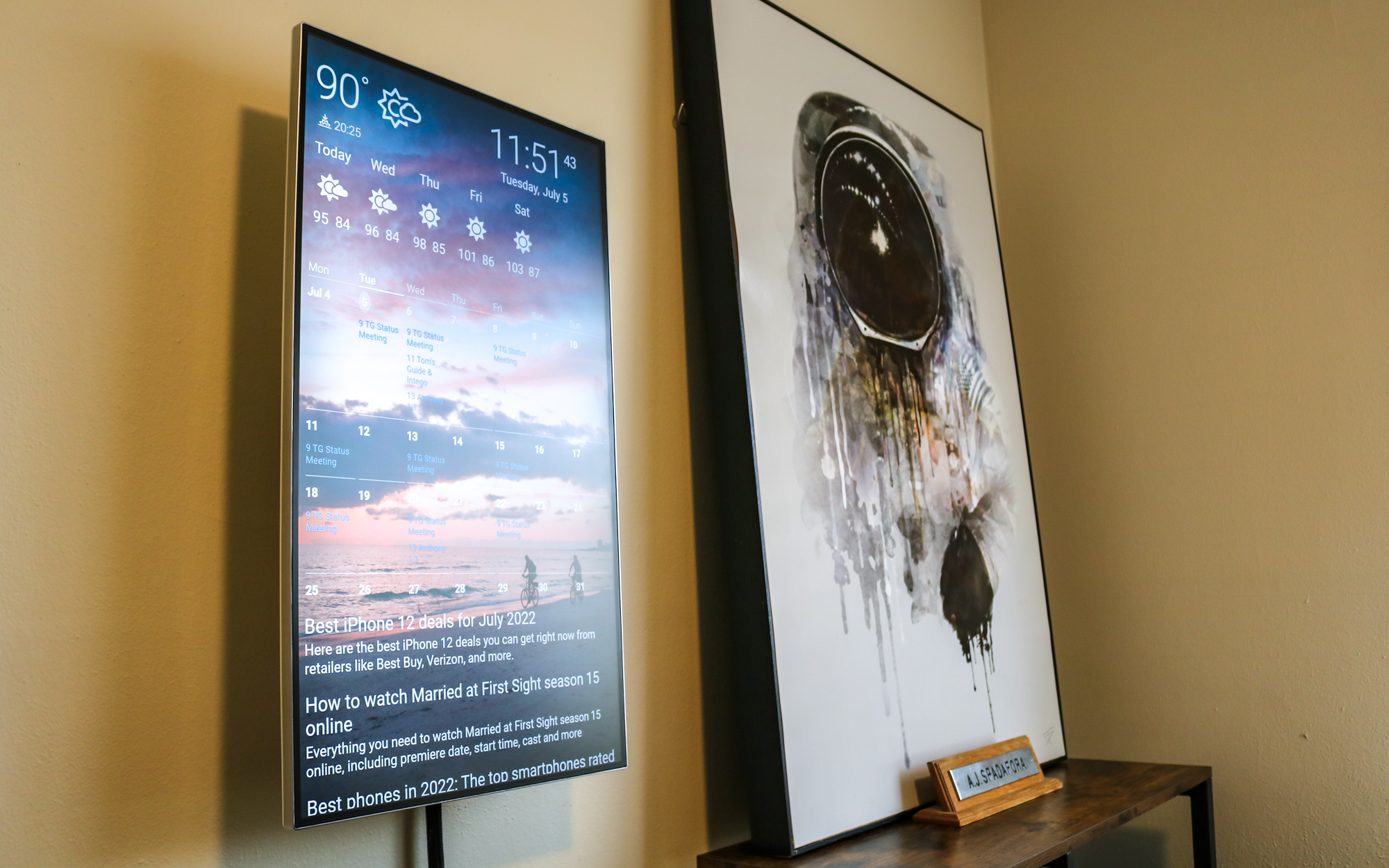
Last week though, the mini PC powering my digital dashboard began acting strangely and turning off on its own. As someone who’s familiar with building PCs, I opened it up, cleared the CMOS, reseated the RAM and even reapplied thermal paste to its CPU, to no avail. My mini PC had gone to the great parts bin in the sky.
Although I could have replaced it with one of the best mini PCs, I wanted a cheaper option and knew if I looked hard enough, I could find something to meet my needs without breaking the bank. While I’m satisfied with the end result, there were certainly some surprises along the way.
Searching for an affordable Raspberry Pi alternative
Even before my mini PC officially bit the dust, I knew it was on its last legs, so I was already searching for alternatives to power my digital dashboard.
As I used DAKboard to set it up, I knew any device with a browser would work, which is why I considered using a Raspberry Pi. However, supply chain issues still remain a problem and while the Raspberry Pi 4B could be had for as little as $35 at launch, good luck finding one for less than $175 today.
In an effort to simplify my digital dashboard setup, I also considered using one of the best streaming devices as I had a Fire Stick 4K Max on hand that I picked up during Prime Day. Although I could access my DAKboard using Amazon’s Silk browser, there isn’t a way to use a Fire Stick in portrait mode.
My search for an affordable Raspberry Pi alternative also took me back to DAKboard’s site where I considered picking up a DAKboard CPU 4. However, this device is actually just a Raspberry Pi 4B with a custom case for $170 and I wanted the additional flexibility that Windows offers, since I do enjoy using a vertical monitor to get some work done.
This led me back to Amazon where, during a search for a suitable mini PC, I stumbled upon several used business workstations. These machines may not be as glamorous but they have more than enough power for my use case. While I found several models from the likes of Dell and HP under $200, I settled on a Lenovo ThinkCentre M910q Tiny ($169, Amazon (opens in new tab)) as I’ve always had a fondness for its design as well as its black and red color scheme.
Plenty of ports, just not the ones you’d expect
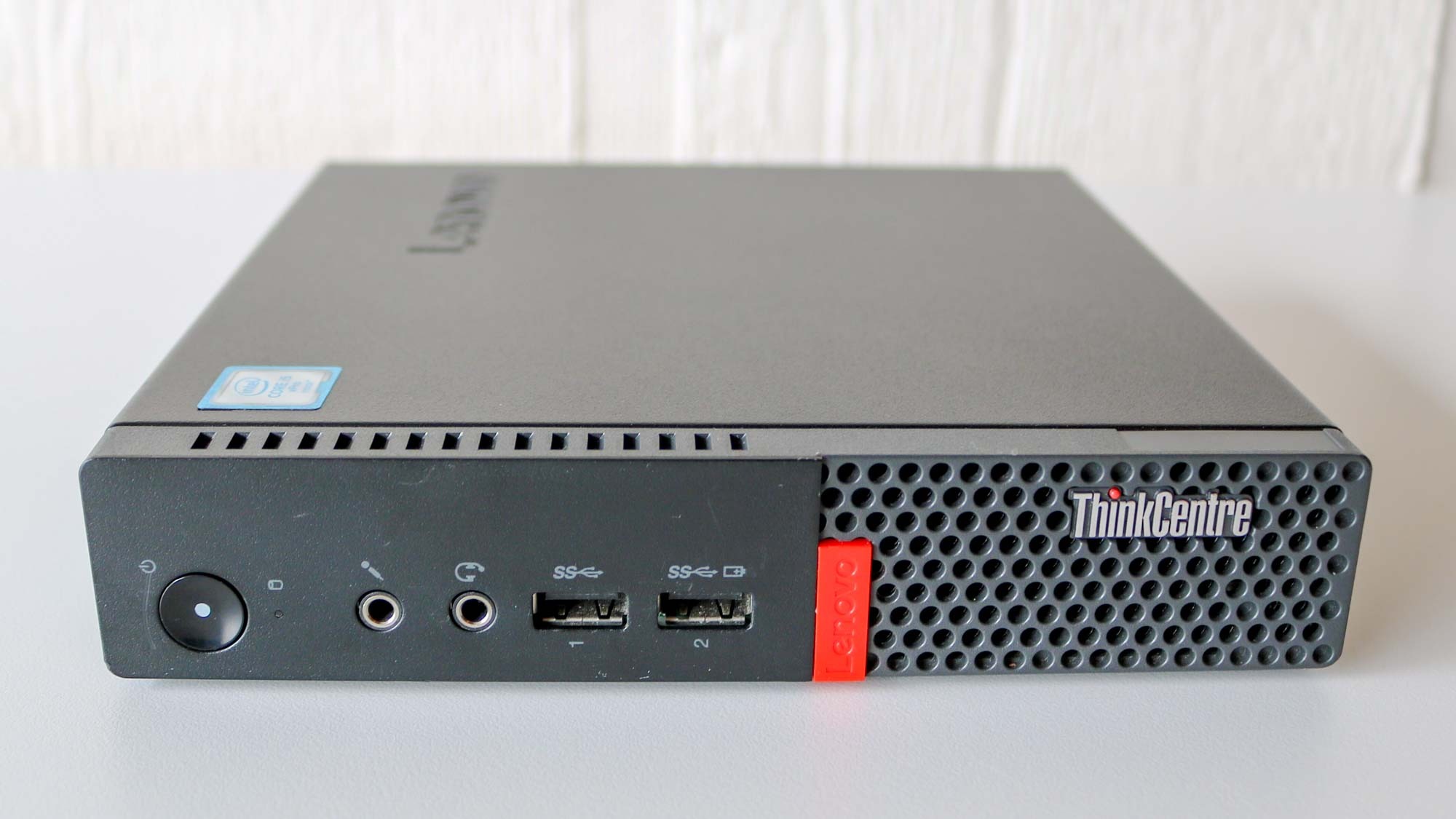
My new — well renewed in this case — mini PC arrived a few days later in a large brown box from Amazon. Besides the device and its power supply, there was also a wireless keyboard and mouse along with a USB Wi-Fi adapter. Wait, what?
Although the listing page specified that this particular configuration came with both Wi-Fi and Bluetooth, my new Lenovo ThinkCentre Tiny had neither. Fortunately, the lack of on-board Wi-Fi wasn’t a deal breaker, as I recently moved my router into my office and planned to connect it via Ethernet cable anyways. As for not having Bluetooth, I actually prefer using the USB 2.4 GHz dongles that ship with many mice and keyboards instead, as there’s no pairing involved and less lag.
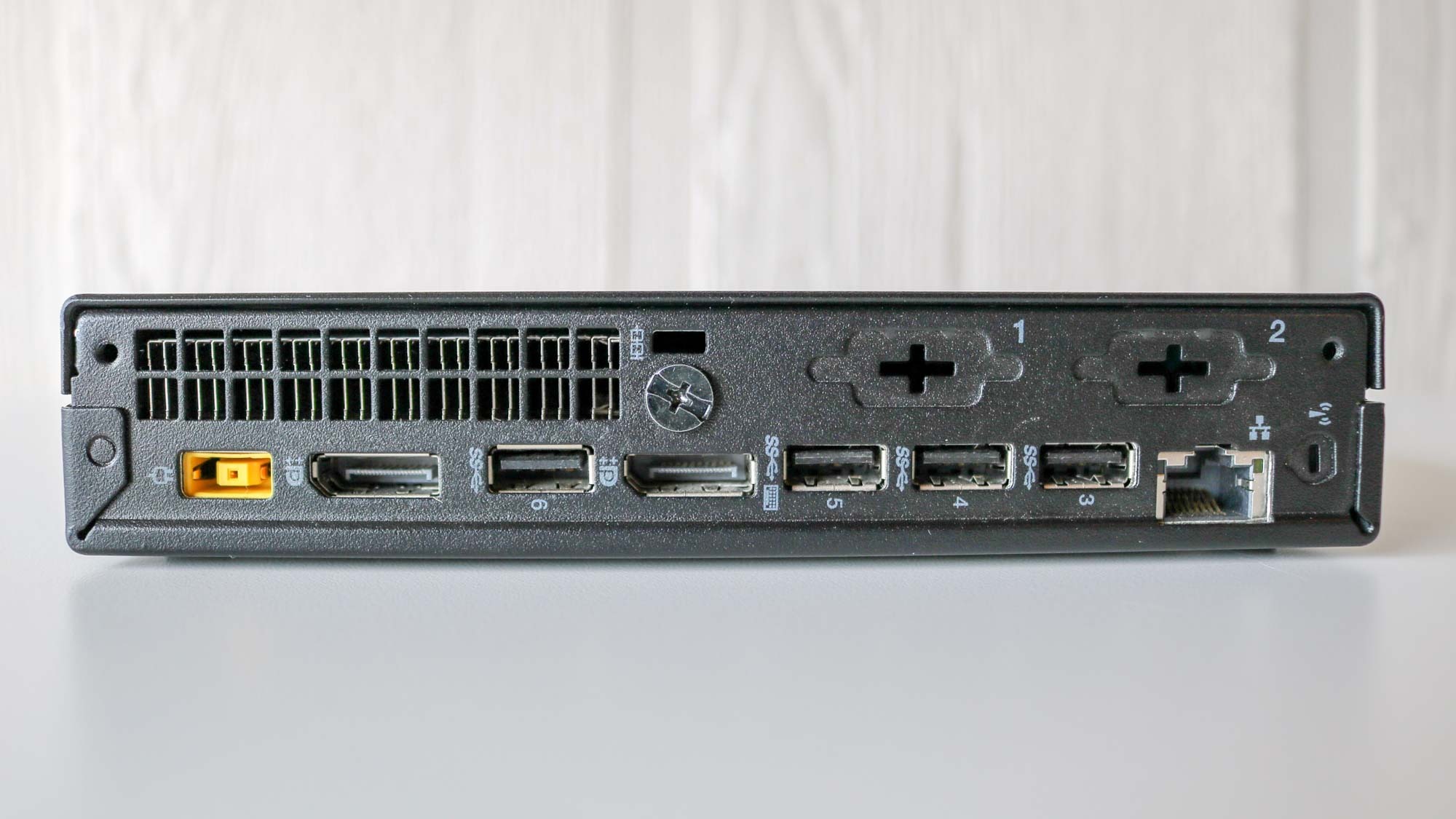
I was so excited to find a PC which I’ve had my eyes on since 2015 for a great price that I didn’t fully inspect the rear I/O before clicking ‘Buy Now’. Since this was a modern PC, I expected it to have at least one HDMI port instead of two DisplayPorts. A DisplayPort-to-HDMI cable let me test the system before putting it in its final home where I used a DisplayPort to HDMI adapter instead, since I had already ran an HDMI cable to my wall-mounted monitor.
I went back to Amazon and looked to see if other used business workstations came with an HDMI port — none of them did. A bit more research into the matter and I had my answer: adding a DisplayPort to a PC doesn’t cost device manufacturers a thing but it costs “$10,000 per high-volume manufacturer plus $0.04 per device” to include an HDMI port according to the comparison site Diffen (opens in new tab).
As for the rest of the specs on my renewed Lenovo ThinkCentere M910q Tiny, the device has an Intel Core i5-6500T with four cores and a base clock speed of 2.50 GHz that can reach 3.1 GHz, 16GB of DDR4 RAM, a 256GB M.2 SSD and Windows 10 Pro pre-installed. Lenovo likely skipped paying the HDMI licensing fee in order to pay for the one from Microsoft.
Loads of power at a great price
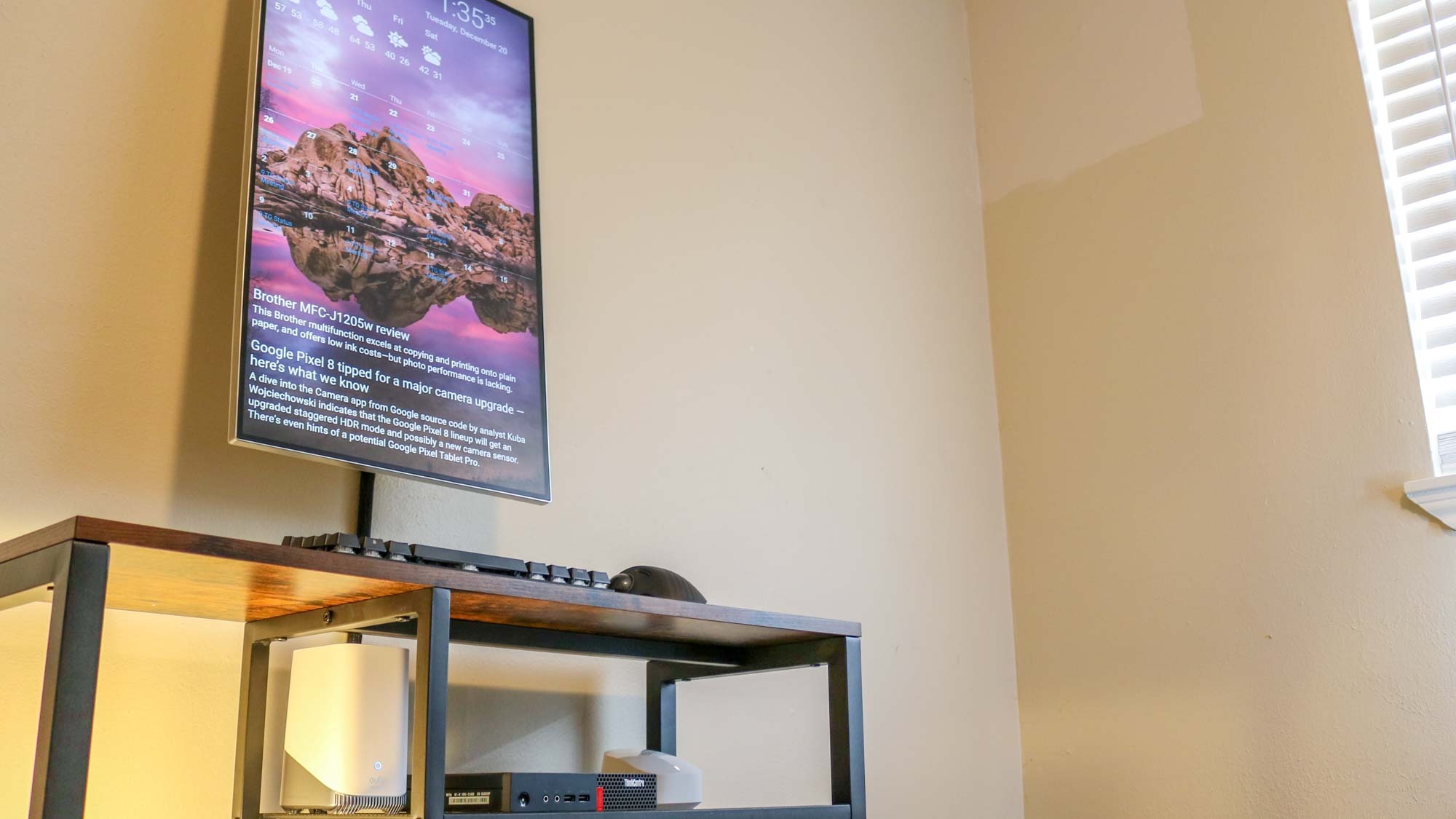
With my renewed business workstation installed, my digital dashboard is now back up and running on the side of my office. In fact, I glanced at it just now to check the Tom’s Guide RSS feed in order to see the most recently published stories.
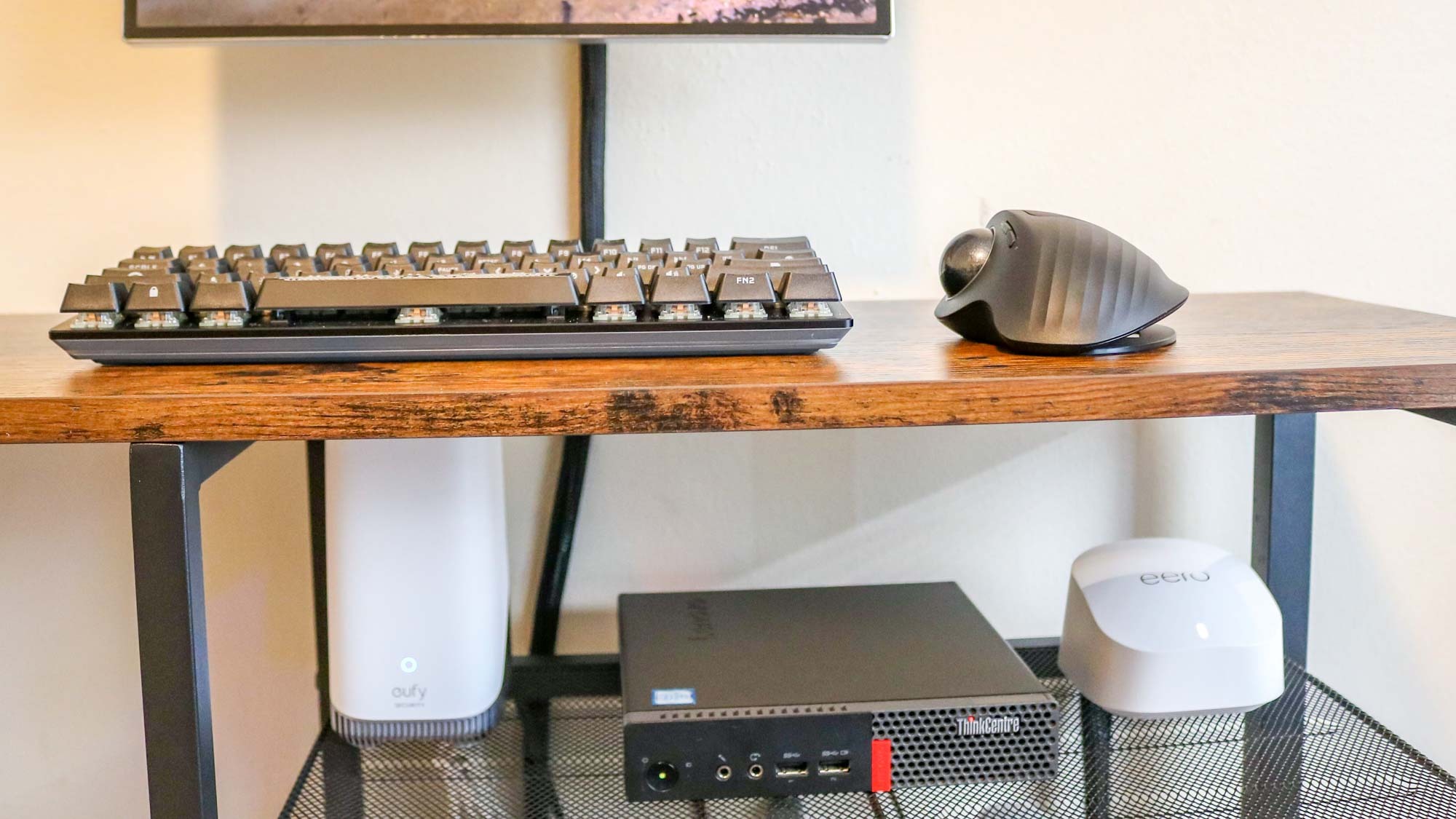
Unlike my old Zotac ZBOX CI329 though, it has enough power that I can actually use it to get some work done when I want a break from using my main PC. It’s great for checking the news to see what stories to cover next and I’ve even toyed with the idea of having Slack open on it in the background so I don’t miss any important work messages. As it’s currently hardwired to one of the best mesh Wi-Fi systems, I may even use it to test some of the best VPNs next time we update our reviews.
Sure, I could have gone with a newer mini PC instead, but at less than $200, I would have ended up with a much less capable device when it comes to raw power. This would have given me some modern conveniences like Wi-Fi, Bluetooth and an HDMI port but repurposing old hardware — even if it wasn’t mine originally — is something I really enjoy. It also goes to show that if you wait long enough, you’ll be able to get a PC that caught your eye at launch for a great price.





